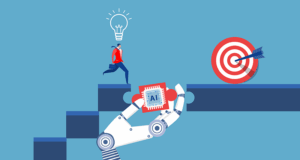You’ve probably been in a situation similar to this: You send a work email and realize, three minutes later, that you misspelled the person’s name. This isn’t just any person — it’s your highly respected mentor. A wave of negative emotion washes over you. It’s tempting to bury the incident in the back of your mind and wallow in shame until you can acknowledge your mistake. But for those who have mastered self-repair, the mistake can be remedied a lot faster.
Why do we get so embarrassed when we make a mistake? Even unintentional errors can result in heavy emotions, such as shame, guilt, and fear — emotions that we don’t want to share and can actually inhibit our performance. Addressing your mistake is difficult because it can make you feel vulnerable. Making mistakes and learning from them is the pinnacle of embracing a growth mindset, but when we look at what it takes to do this, discomfort is a key ingredient. Once you recognize and tend to your discomfort, embarrassment can pass, and the self-repair needed to recover can begin.
In a 2021 study, researchers explored self-repair by interviewing a group of healthcare providers about mistakes that resulted in harming a patient. The goal was to better understand how the providers responded, both immediately and once their shift was over. For those who successfully self-repaired, the most noticeable outcome was the ability to learn from their mistake, reporting improved professional and personal skills as a result of the error. Whether or not the providers could successfully self-repair depended on their behaviors, the behaviors of their co-workers and managers, and the overall culture of the workplace.
The researchers discovered the biggest facilitator of self-repair is interpersonal communication: seeking support from managers and co-workers and speaking with family, friends, or a counselor about mistakes. One tactic to employ here is reappraisal, or reframing the meaning of a situation to adjust its emotional impact. Hearing yourself tell the story out loud can aid in your own understanding of the situation. Then, receiving encouragement from the people around you can help rebuild your confidence, setting you up for another important aspect of self-repair: apologizing to yourself and others.
It’s hard to see the situation clearly when your ego is wounded. When you’re distracted by worries about your professional reputation or uncertainty about how the project can move forward following a mistake, it’s easy to forget to work on healing yourself. However, findings from neuroscience emphasize the importance of focusing on your own emotional state before moving forward. Here’s how.
Emotional regulation: Put your oxygen mask on first
Emotional regulation research shows us that doing something is better than doing nothing. In this study, participants were assigned to three groups while watching “disgust-eliciting” videos of medical procedures: One group watched the video and could let any emotion emerge; another group had to suppress emotional expression so an observer wouldn’t know what they were feeling; and the third group was told to reappraise the experience into a learning opportunity. Researchers found suppressing emotions led to the greatest internal physiological responses, such as rising heart rate, whereas reappraisal strategies were more effective at reducing physiological responses and emotional intensity.
What this means is finding ways to reappraise can aid in your overall emotional regulation, allowing you to recover faster and move forward when you make a mistake. Going for a run, screaming into a pillow, and having a good old-fashioned cry are all ways you can take care of yourself.
Understand how others have been impacted: Identify who’s struggling to breathe
Once you’ve been able to regulate your emotions, it’s time to consider how your gaffe might have influenced others. Maybe your mistake made people feel uncertain, powerless, or treated unfairly? The SCARF® Model is a great tool for examining how your mistake has impacted others. This model — which stands for status, certainty, autonomy, relatedness, and fairness — can help you understand social behavior and how it’s influenced by our desire to minimize threat and maximize reward. Thinking through the social threats and triggers that may have been activated by your mistake will help pinpoint areas for you to focus on with those affected.
Engage with empathy: Help others put on their masks
Now that you’ve tended to yourself and examined how others could be affected, it’s time to put your thoughts into action. Connecting with the affected parties, apologizing, and repairing relationships set the stage for finding a solution together. And best of all, empathy works both ways. If you’re the offended party, role modeling it for others eases the negative emotions associated with errors, both for you and the person who made the mistake.
Let’s rewind. You just noticed your mentor’s name was misspelled in the email. You let out a big sigh, go for a walk, and call a former co-worker who’s familiar with your mentor. You share your blunder; they listen, laugh, and remind you it can’t be the first time someone has misspelled her name. You consider how many times this has happened to your mentor and whether she’s interpreted the misspellings as unintentional mistakes or a threat to her status. You remember a story she shared about a former manager who couldn’t bother to distinguish her from the other woman who worked in the office. You decide to send a follow-up email: “Sorry for misspelling your name earlier; it was a careless error on my end and doesn’t reflect my appreciation for you.” Moving forward, you remember to double-check the spelling of people’s names before hitting send. You’ve self-repaired and learned from your mistake without needing to play the shame game.






